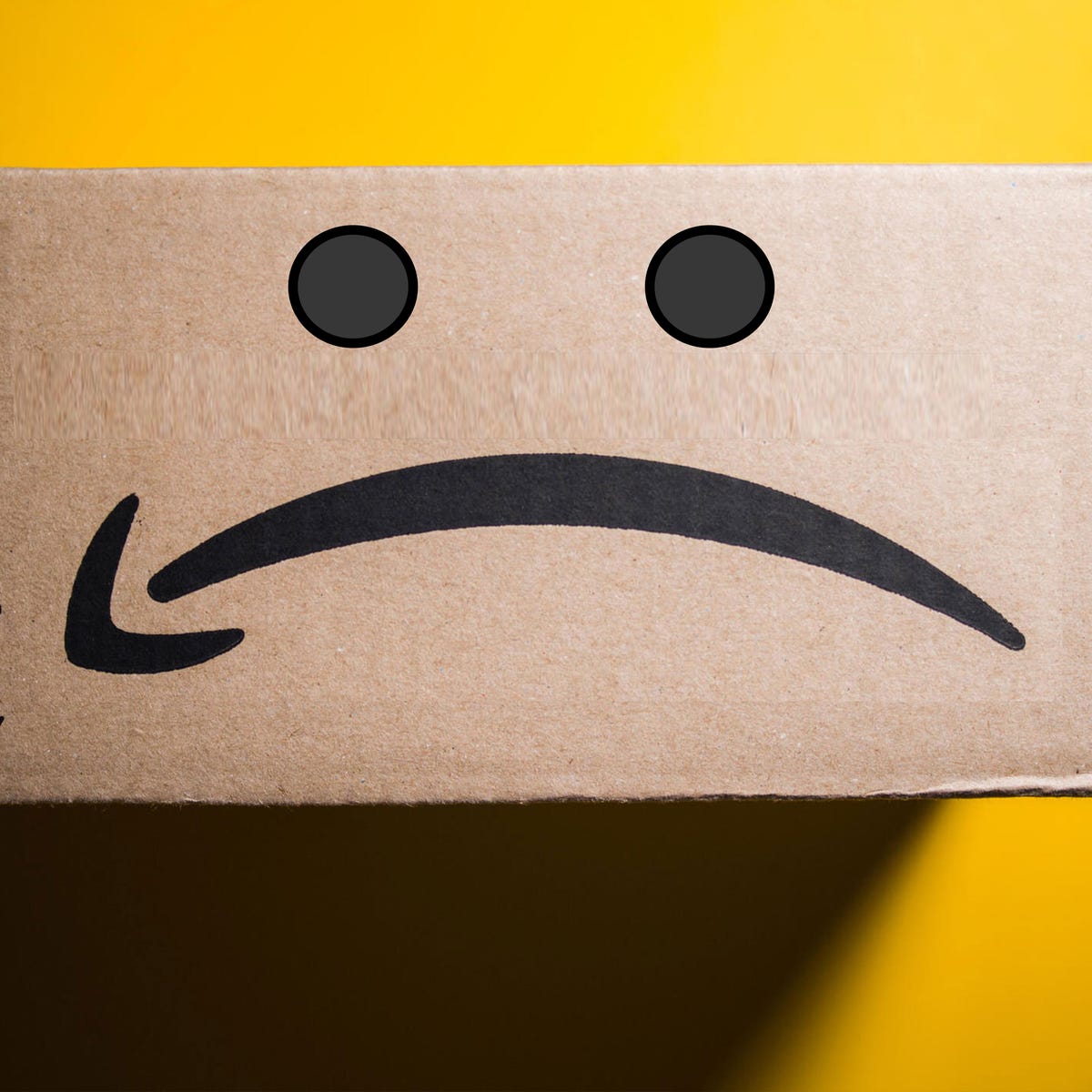Amazon’s New Seller Strategy To Fight Stiff Competition And Sharpen Focus On Profitability.
Amazon may believe its loyal consumers, particularly Prime members, will be unaffected by the changing strategies.

Over the last 10 years of its operations in India, Amazon has recruited over a million merchants from around the country to sell on its platform. While the platform’s relationship with sellers has been rocky for the most part, recent changes to the seller fee structure by the platform have left them confused. To be sure, Amazon and Flipkart have regularly revised seller incentives over the years to promote specific categories or price points.
The most recent Amazon modifications, which took effect in June, show some larger strategy changes by the American e-commerce business in India because it confronts tremendous competition and is now more keenly focused on profitability.

This is especially true given that it has lost market share in important categories like apparel and is now competing not just with arch-rival Flipkart but also with the mammoth Reliance group and newer upstart Meesho.
Fees for new sellers.
Beginning in June, Amazon changed its referral fees or the commission it charges sellers in categories like fashion, cosmetics, pharmaceuticals, and pet entities. However, Amazon has selected an innovative two-pronged strategy, lowering prices for lower-priced products while increasing fees for higher-priced objects in the same category. For example, the fee for a saree priced above INR1,000, now 19.5%, would be increased to 22%. However, for sarees priced under INR1,000, Amazon has cut fees from 18% to 14%.
These improvements range over multiple categories and aim to position the platform more competitively for value buyers while bringing some new seller organisations to the fore.
Seller fee changes depending on diverse variables, including market dynamics and numerous macroeconomic considerations. They have made specific changes to the fee rate card as part of the recent fee revision, including the introduction of new fee categories and the reduction of fees in particular categories, according to an Amazon India spokesperson’s statement, adding that the endeavour is to ensure that fees on Amazon continue to stay competitive for sellers so that sellers find value in doing business on Amazon.
Increasing price competition.
Across various areas, Amazon has been considered as the most costly platform for sellers; however, in some categories, it has been on a level with Flipkart. In a recent report, analyst company Jefferies measured Amazon’s total take rate on an Indian ethnic apparel product for ladies priced under INR500 to be 32%, while Flipkart’s was 23% and Meesho’s was 14%. Merchants consider Amazon’s shift to lower price points and reduced fees for lower-priced items in various categories as a ploy to persuade them to cut their listing costs on the site.

This is noteworthy, provided Amazon’s ongoing competition with Meesho, which processed one billion orders through its platform by 2022. Prices on Meesho are substantially inferior, with an AOV (average order value) of INR350-INR400, compared to more than INR1,000 on Amazon, owing to 0% commission for merchants and reduced total expenses.
Flipkart has launched Shopsy to compete with Meesho’s lower-priced play by offering merchants zero-commission rates.
While Amazon’s fees remain far from zero, the platform has reduced them in lower-cost areas. These shifts are also more apparent in clothes and household goods, where Meesho sells the most products at incredibly cheaper costs. Meesho’s volume comprises 50% apparel and 10% home and kitchen. For example, until May 2023, Amazon charged a flat referral fee of 17% regardless of the purchase price.
- Amazon has reduced the costs for home décor goods priced below INR300 to 7%, but those priced beyond this amount will continue to pay a 17% commission.
- Amazon has reduced the cost of kitchen commodities like bottles and containers in the INR300-INR500 sector to 7.5% from 9.5% before, but the fee for the same products priced over INR500 has climbed to 12% from 11.5%.
- Amazon formally charged a 14% fee for shoes priced less than INR1,000 and a 16% cost for those priced beyond INR1,000. Amazon now charges a 14% fee for anything priced under INR500 and a 16% cost for shoes priced above INR500.
- Amazon has earlier lowered the fee on men’s T-shirts priced under INR500 to 14% from 17%.
According to a fashion retailer, they want to cut the pricing into specific categories. They are making attempts to form particular groupings. According to a brand aggregator executive, this may be an effort to modify the catalogue and cover specific categories.
According to one e-commerce analyst, although Amazon is seeking to attract newer consumers who have flocked to Meesho in recent years, it is also testing the strength of its loyal customer base, particularly its 20 million or more Prime members in the nation. So, while Amazon has reduced the fee on men’s T-shirts priced below INR500, it has largely spiked the commission on T-shirts priced beyond INR500 from 16% to 21%.
In another matter, the seller’s charge for beauty goods priced under INR500 has been increased from 3% to 6%. Previously, the 6% tax would apply to beauty commodities priced above INR500.
Several retailers have stated that they would pass on charge increases to customers. Will it, however, prevent Amazon buyers?
According to the analyst, Amazon may believe its loyal consumers, particularly Prime members, will be unaffected by the higher pricing. Furthermore, Amazon may give significant discounts, particularly on commodities sold through its chosen partners, which have replaced its former major sellers, Cloudtail and Appario.
Are they pushing sellers to Cloudtail alternatives?
There may be other causes for the high increases in numerous significant areas. Several online merchants and brands suggested that this was done to divert sellers to sell through some of the platform’s more prominent vendors, particularly those entities that replaced Cloudtail, one of its largest sellers and in which Amazon also had equity. Last year, it was argued that Amazon had discovered some new vendors to replace Cloudtail, which used to sell up to 70% of the volumes on the platform until rules limited it to 25% of the site’s sales.
In reality, many of these new merchants are supported by substantial commercial organisations. Cocoblu, for example, was founded by RattanIndia Enterprises, Rocket Commerce by RK company, and DawnTech Electronics by the Salarpuria-Sattva company. Amazon charges a substantially lower selling commission to these select significant merchants. They intend to make the direct listing more costly in some categories and make it easier for vendors to sell to larger sellers like Cocoblu and Rocket Commerce, who then offer the items on Amazon. They effectively drive the brands to these new dealers that have supplanted Cloudtail.
Last year, it was reported that merchants encountered difficulties following the demise of Cloudtail and the transfer to fresh providers. There were discussions about the benefits of accessing Vendor Central, Amazon’s interface for companies who provide essential suppliers on Amazon, who then resell goods to customers. Vendor Central access offers more data, analytics, tracking services, and product return assistance. Furthermore, when a company sells to a Cocoblu instead of selling directly, the overall cost for the business decreases dramatically since they do not have to pay for shipping or manage orders, among many things.
Amazon has increased national delivery prices for merchants who list directly as part of these new seller fee modifications. Some sellers claim that selling to these giant suppliers rather than listing directly on Amazon results in 10%-20% better profits. An executive at a cosmetic firm stated they were looking to list some of the products directly on Amazon, but now they think it’s better to sell all products through the larger vendors.

Making returns more complicated.
Another apparent trend in Amazon’s recent changes is the platform’s attempt to discourage product returns. The tech giant has increased the refund costs it charges vendors for returned products significantly. Although there was previously a flat refund cost depending on the price of the goods for all sellers, the company has now opted to impose varying fees for different sellers, namely, Basic, Standard, Advanced, and Premium; Amazon categorises vendors depending on their performance. While the refund charge for a returned object worth less than INR500 was INR50, it has now been increased to INR75 for Basic category sellers and INR65 for Premium category sellers.
Last year, it was reported that Amazon and other e-commerce platforms were tightening their regulations on product returns, signalling a significant shift in their approach to customer service. In recent years, the tech giant and Flipkart have reduced the return window across most categories from 30 to 7-10 days. The tech behemoth stated that it had changed its return policy “in a few categories” and begun warning consumers about frequent returns and, in certain circumstances, banning customer accounts.
Well, being honest, this was somehow required as there are a plethora of customers who take undue advantage of the return and refund window, thereby creating a mess for the delivery executives.
In conclusion.
While these modifications are being implemented in the backend, the primary concern is how this will affect customers. For starters, we may see more clothes and home items at lower prices, similar to what is offered on value e-commerce sites. Second, because many brands and merchants would supply them through more giant suppliers rather than bear the expenses of selling directly, there may be more attractive discounts on higher-priced products.

These tactics are also part of Amazon’s more giant objective of moving towards profitability in a country still losing money after investing over USD 6 billion. The next thing to observe is how competitors react.
Proofread & Published by Naveenika Chauhan





